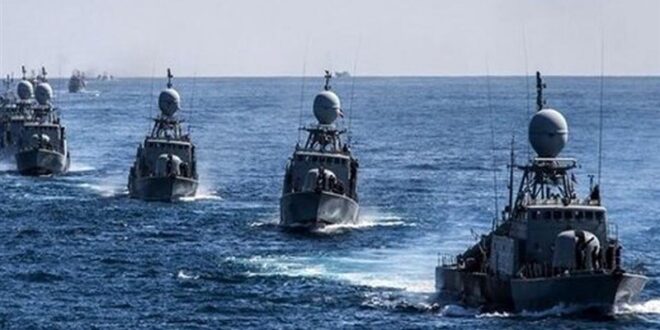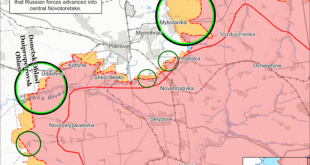There has been a notable escalation in maritime tensions between Iran and the United States in the vicinity of Iran’s southern coastlines. In recent years, the Persian Gulf and the Strait of Hormuz have been the sites of several incidents involving attacks on tankers. These occurrences have often taken place during times characterized by escalated regional tensions in the region, including Iran.
In November 2022, the United States Navy’s 5th Fleet, stationed near Bahrain, disclosed comprehensive information and photographic evidence about their inquiry into the attack on the Liberian-flagged Pacific Zircon vessel. The findings indicated that the Shahed-136 drone resulted in a hole of 30 inches in width near the rear of the ship, causing damage to a boiler, potable water tank, and life raft located aboard the ship.
In June 2023, Iran publicly revealed a hypersonic ballistic missile named Fattah, asserting its capability to breach any existing global defensive system. A range of reconnaissance, intelligence, offensive, and combat drones to support and command vehicles and offensive and defensive systems. Also, Iran is developing cruise missiles that may use ramjet fuel technology, facilitating flying at supersonic speeds. The use of supersonic missiles would provide Iran with the capability to exhibit a prompter response to acts of aggression. Additionally, it expressed strong disapproval of the perceived transgressions of international maritime regulations committed by the United States, both inside the area and abroad.
Additionally, the leader accused Washington of engaging in activities that include the harassment of oil ships and assisting smuggling organizations in marine environments.
Also, Iran’s deployed air defense systems are capable of effectively neutralizing airborne threats posed by adversary aircraft, helicopters, and missiles in 2022. Iran has procured and advanced a diverse array of surface-to-air missiles, radars, and electronic warfare systems, with some weapons drawing inspiration from Russian or Chinese origins. In 2019, Iran asserted its claim of responsibility for the interception of a U.S. drone in the Gulf region, purportedly accomplished by the use of its domestically developed Khordad-3 Surface-to-Air Missile (SAM) system.
Following these developments, The Islamic Revolutionary Guard Corps (IRGC) fleet acquired the aforementioned strategic systems and weaponry shortly after conducting military exercises in the vicinity of the three contested islands in the Gulf: Greater Tunb, Lesser Tunb, and Abu Musa. IRGC operates autonomously from Iran’s conventional military, with dedicated land, naval, and aviation units. Furthermore, it maintains strong connections with the supreme leader and other prominent individuals inside the political hierarchy. It is widely acknowledged as the preeminent military entity inside Iran, exerting a substantial impact on both the nation’s internal affairs and its external relations.
The United Arab Emirates and Iran both claim ownership of these islands at the moment. The IRGC Navy has also acquired Ghadir and Nasir cruise missiles. The Ghadir (CM-300) missile, which has a maximum range of 300 kilometers, is extensively used in coastal launchers and naval combat boats. Upon reaching its designated target, the missile proceeds to establish a lock on the target by using an active radar guidance system. The Nasir (CM-90) missile is equipped with a turbojet propulsion system, enabling it to achieve a maximum operational range of 90 kilometers. The system can be deployed from both coastal and maritime locations. The objective of the maneuvers was to demonstrate the authoritative and defensive readiness of the IRGC Navy in safeguarding the security of the Persian Gulf and Iranian territories.
Iran is actively engaged in the development and enhancement of its defense infrastructure to safeguard the Persian Gulf and its vested interests within the area. This endeavor involves the development and deployment of a diverse range of military weapons. In addition, Iranian missiles exhibit varying ranges contingent upon respective types and classifications. Iran has a significant inventory of ballistic missiles, mostly consisting of short-range ballistic missiles (SRBMs) and medium-range ballistic missiles (MRBMs). Notably, several missiles within this arsenal can reach targets located as far away as Israel and southeast Europe. Iran has a variety of cruise missiles and anti-ship missiles, which have a maximum range of 3,000 kilometers. Iran is now engaged in the development of space-launch vehicles (SLVs), which have the potential to serve as a means for launching intercontinental ballistic missiles (ICBMs) at a later stage.
There has been a notable advancement in the development of ballistic and cruise missiles, which possess the capability to effectively target various locations in the Gulf region and even extend their reach beyond. These missiles have seen significant improvements in terms of both accuracy and range. Iran has the most extensive and varied missile inventory in the Middle Eastern region, consistently enhancing its missile capabilities and conducting trials of new iterations. The IRGC of Iran is the primary entity involved in this particular sphere, and it has undertaken several exercises and drills in the Gulf region to showcase its preparedness and determination.
The intentions and ambitions of Iran are contingent upon the prevailing political and security circumstances within the region. The Iranian Navy is currently engaged in the development and enhancement of its ballistic and cruise missile capabilities, motivated by a range of factors. First and foremost, Iran seeks to establish a deterrent against possible hostilities originating from its regional adversaries and the United States, which possess more advanced conventional military capacities. Iran seeks to formulate a response to the United States exit from the 2015 nuclear agreement and subsequent reinstatement of sanctions. These actions have contributed to the escalation of tensions between Tehran and Washington.
Furthermore, Iran is actively seeking to augment its asymmetric warfare strategy, a tactic that heavily focuses on the utilization of high-speed boats, submarines, mines, and missiles as a means to counterbalance the naval dominance of its opponents. Finally, Iran seeks to assert its strength and exert its influence in the Persian Gulf, the Arabian Sea, the Gulf of Oman, and other regions. The nation seeks to affirm its sovereignty and entitlements over the contested islands in the Gulf, which are subject to claims made by the United Arab Emirates.
Deterrence, asymmetric warfare, and self-sufficiency are the guiding principles of Iran’s military strategy. Asymmetric warfare encompasses a range of tactics used by troops to disrupt and engage enemy vessels, installations, and oil facilities in the Gulf region. These tactics include the utilization of swift watercraft, submarines, mines, unmanned aerial vehicles, and cyber warfare techniques. Iran has several difficulties and dangers emanating from its regional adversaries as well as the United States, which possesses more advanced conventional military capacities.
Iran is confronted with economic sanctions, political isolation, and domestic upheaval as well. The objective of Iran’s naval forces is to conduct patrols and safeguard the nation’s territorial waterways and islands in the Gulf while also projecting strength and exerting influence in other maritime regions. The naval forces of Iran are comprised of two distinct branches, namely the regular Islamic Republic of Iran Navy (IRIN) and the Islamic Revolutionary Guard Corps Navy (IRGCN). The IRIN is responsible for the operation of bigger naval vessels, including frigates, corvettes, and submarines, while the IRGCN is primarily engaged in the operation of smaller watercraft, such as patrol craft, missile boats, and swarm boats.
In conclusion, Iran’s military system is aimed at safeguarding the Persian Gulf and its regional interests. Hence, Iran endeavors to bolster its security and extend its influence via the development and deployment of diverse military weapons, thereby presenting substantial problems to its rivals in the Gulf region.
 Eurasia Press & News
Eurasia Press & News

